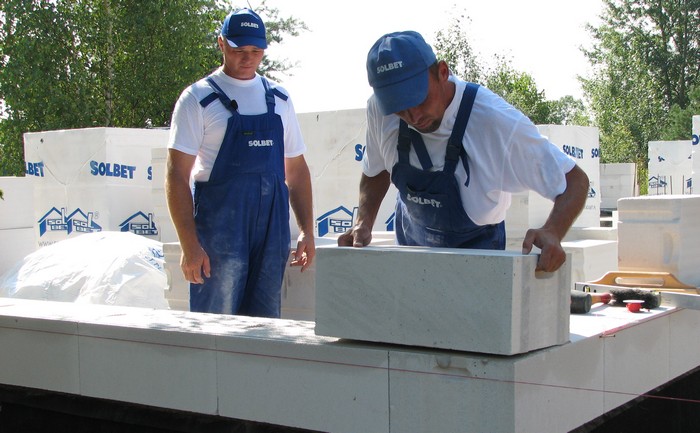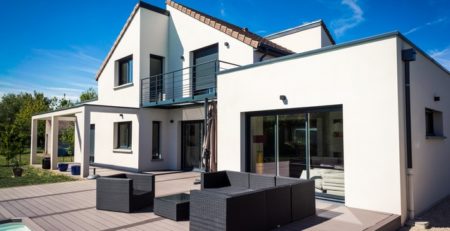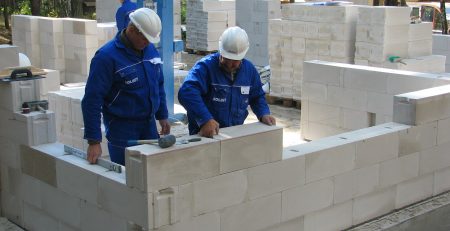Cellular concrete is th e most popular
Few investors know that cellular conc rete has been the most popular wall material used in Poland and Europe for many years. One may wonder why this technology is so popular. The answer is simple – this material allows you to build massive, warm and durable buildings easily, quickly and precisely. This is due to the expectations of investors and contractors. It is also due to the expectations of designers and site managers, who know this material well and know that this construction system provides opportunities to build a building of high technical quality.
AAC, what is it?
Autoclaved aerated concrete (AAC for short and also called cellular concrete, Siporex, porous concrete, aerated concrete) was invented at the beginning of the 20th century in Scandinavia and was intended to replace the then basic building material – wood. It was to be easy to join and process, warm and durable. And that’s what was invented.
Today, autoclaved aerated concrete is a universal material, used worldwide. Over the years many AAC production technologies have been developed. To produce cellular concrete, you need: sand, cement, lime, gypsum and water. An expanding agent (aluminium powder or aluminium paste) is also added, which acts as yeast or baking powder when baking a cake, i.e. it is used to foam the concrete. This material has certain prominent properties that determine the other characteristics. For cellular concrete such properties are high porosity and homogeneity. It is the only structural construction material that combines features such as compressive strength, to allow it to be used for the construction of a buildings’ load-bearing walls, while maintaining high thermal insulation.
Cellular concrete is a homogeneous material, which means that all physical parameters of the material (e.g. thermal insulation, soundproof insulation, compressive strength) are the same in all directions. This makes the material “technically predictable”. Full AAC masonry units, i.e. blocks, lintels, tiles have the same properties crosswise the wall as well as along and across the wall. An entire wall made of AAC blocks has the same thermal insulation, compression strength, and sound insulation in any direction. In this way you get rid of the effect of walls made of heterogeneous materials (e.g. air-bricks), in which undesirable phenomena such as differences in heat conduction, sound transmission or different compression strength take place in different directions in the wall cross-section.
Its high porosity makes cellular concrete a lightweight material. For comparison, the weight by volume of AAC is only 350 to 700kg/m3, while that of normal concrete is 2400kg/m3. The porosity scale or aeration of the structure can be as high as 80%, i.e. there is as much as five cubic metres of air per one cubic metre of the material skeleton. The air enclosed in the cellular concrete makes it a very good thermal insulator. The material skeleton of the cellular concrete structure itself is strong enough to be an excellent construction material. It is used for the construction of load-bearing walls both in single-family homes and in multi-storey buildings. The compressive strength range for cellular concrete is from 2MPa to 5MPa, (1MPa is 100 tonnes per m2).
For investors who pay attention to ecology
Cellular concrete is a sustainable material. This applies to every stage of the construction process: from the acquisition of raw materials needed for the production of cellular concrete, production of materials, transport of products, construction and usage of the building and disposal of material after possible demolition of the building. AAC’s production consumes the least energy among the currently produced construction materials. The low weight of cellular concrete makes it possible to optimise transport. The care for energy efficiency is also noticeable during the construction process, with easy bricklaying, low effort and quick construction. High thermal insulation translates into energy-saving use of cellular concrete buildings. In addition, the surface of a cellular concrete wall is always nice to the touch (like wood), i.e. it does not radiate cold, which has a great influence on the well-being and thermal comfort of users.


